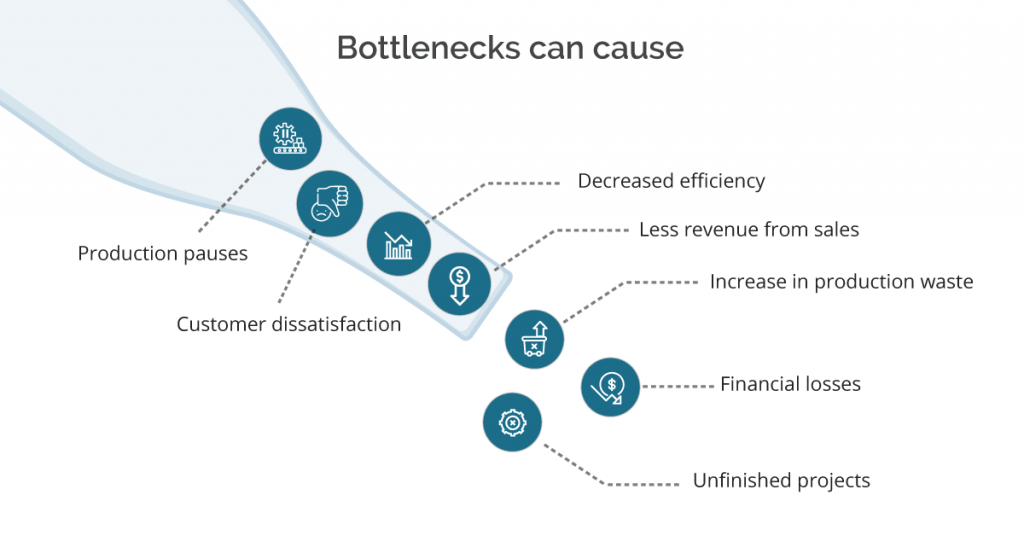Product development bottlenecks are constraints or obstacles that slow down or impede the progress of creating and launching a new product. These can occur at various stages, such as design, testing, resource allocation, or communication between teams.
Common bottlenecks include complex approval processes, limited skilled personnel, inadequate tools or technologies, unclear project requirements, and inefficient workflow management. Identifying and addressing these bottlenecks is crucial for streamlining product development, reducing time-to-market, and maintaining a competitive advantage.
So, let’s break down common bottlenecks in digital product management and knowledge work in a more accessible way:
1. Fuzzy Product Vision
Cause: Lack of clear, shared understanding of what the product should be
Effect: Team members work in different directions, wasting time and resources
Diagnosis:
- Ask team members to describe the product in a simple sentence.
- How does the product change the life of end consumers
- Look for conflicting ideas while answering the above two questions
2. Too Many Cooks in the Kitchen
Cause: Involving too many people in decision-making
Effect: Slow progress, difficulty in reaching consensus
Diagnosis:
- Count how many approvals are needed for a typical decision
- Measure how long it takes to get from idea to action
- Identify which steps in the approval process take the longest
3. Flying Blind
Cause: Not having easy access to key knowledge areas
Effect: Team is slow to spot problems, hard to make informed decisions
Diagnosis:
- Try to find key customer metrics (like user numbers) – how long does it take?
- Ask team members if they know how the product is performing right now
- Check how often outdated information leads to mistakes

4. Everything is “High Priority”
Cause: Poor ability to decide what’s truly important
Effect: Team spreads itself too thin, important things don’t get done, Spillovers from previous timebox
Diagnosis:
- Look at the last 10 completed tasks – were they all equally important?
- Ask the stakeholders what is the cost of not doing the work in terms of dollar value?
- Check if “urgent” means stopping something else completely and starting something new
5. Missing Skills
Cause: Team lacks expertise in crucial areas
Effect: Work takes longer, quality suffers, team relies too much on a few experts
Diagnosis:
- List the skills needed for your product – does your team have them all?
- Look for tasks that only one or two people can do
- Check if certain types of work often get delayed due to lack of know-how
6. Overwhelmed Team Members
Cause: Too much work, not enough people
Effect: Stress, mistakes, and delays
Diagnosis:
- Ask team members if they regularly work overtime
- Check if deadlines are often missed, check if working overtime gets praised by leaders
- Look for signs of stress or burnout in the team; Number of narrow ended questions getting asked ; Are the questions asked during meetings spotting the person or the system?
By understanding these bottlenecks, their causes, and how to spot them, product managers can take steps to make their teams more effective and their products more successful.
Remember, the goal is to create a smooth, efficient flow of value where great ideas can quickly become great products!
